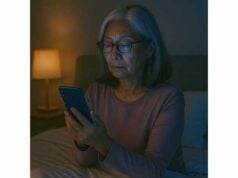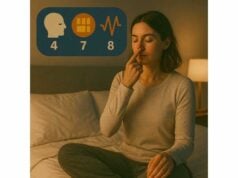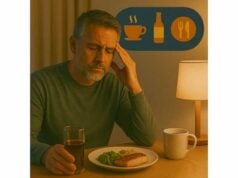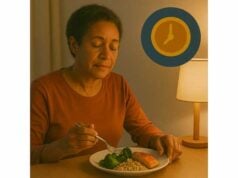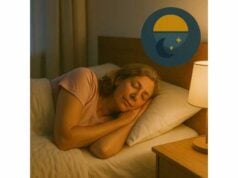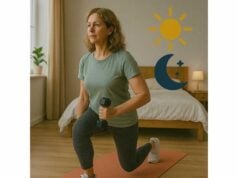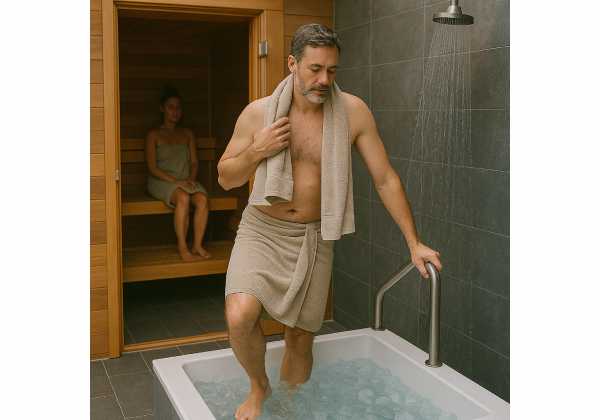
A well-designed heat and cold routine can relax a tense nervous system, deepen sleep, and nudge heart rate variability (HRV) in the right direction. The trick is applying the right dose at the right time: how hot, how cold, how long, and when in the day. This guide synthesizes practical protocols for sauna, cold exposure, and contrast therapy you can adapt at home or in a gym. It focuses on evening wind-down routines that promote sleep, morning cold exposure that energizes without disrupting circadian biology, and contrast sequences that balance comfort with safety. You will also learn who should steer clear or modify these methods and how to pair them with breathwork and light hygiene for consistent gains. For a broader context on sleep, stress, and recovery fundamentals, see our pillar on sleep and stress for healthy longevity.
Table of Contents
- How Heat and Cold Exposure Influence Sleep and HRV
- Sauna Timing and Duration for Evening Relaxation
- Cold Exposure: Morning Versus Evening and What to Avoid
- Contrast Protocols: Practical Sequences and Safety Notes
- Who Should Not Use Heat or Cold Routines and Why
- Stacking with Breathwork and Light Hygiene for Better Sleep
- What to Track: Sleep Quality, Resting Heart Rate, and Recovery
How Heat and Cold Exposure Influence Sleep and HRV
Heat and cold are powerful, simple levers for shifting autonomic balance. They act through thermoregulation—how your body manages core temperature—and through direct input to the cardiovascular and nervous systems. When used thoughtfully, both can ease you toward restorative sleep and more resilient HRV patterns.
Start with sleep physiology. As bedtime approaches, your core temperature naturally drops about 0.5–1.0 °C. That decline opens the gate for sleep pressure, helping you fall asleep faster and reach slow-wave sleep earlier in the night. Gentle heat before bed can accelerate that process. By warming the skin (especially hands and feet) and then allowing heat to dissipate, you create a stronger temperature gradient that speeds the fall in core temperature during the first hours of sleep. That is why a warm bath, shower, or low-to-moderate sauna session taken sufficiently before lights-out can shorten sleep latency and support the early-night deep-sleep window. The keys are timing and dose—enough warmth to trigger peripheral vasodilation, not so much that you feel overstimulated.
Cold exposure acts differently. A brief cold stimulus drives an immediate sympathetic surge (the “cold shock” response): faster breathing, higher heart rate and blood pressure, and increased alertness. With repeated, well-tolerated exposures, that response tends to habituate over several sessions, and many people report smoother post-cold calm and improved mood. From a sleep perspective, the immediate arousal makes cold better suited to morning or daytime use. There is one notable exception: cold immersion after late-day endurance training can lower evening core temperature and reduce nighttime arousals, provided it is not excessively stimulating and is timed to allow a gentle return to baseline before bed. For strength training, frequent post-workout cold can blunt anabolic signaling, so use it sparingly when your main goal is muscle growth.
HRV—the beat-to-beat variability that reflects autonomic flexibility—responds to both thermal extremes. Heat can produce a pleasant parasympathetic rebound after you exit the sauna or bath, especially when followed by a relaxed cool-down. Cold provokes a sympathetic spike but may support parasympathetic reactivation in the recovery period if the exposure is brief, controlled, and followed by calm breathing. The dose–response arc matters: shorter, tolerable exposures that end with you feeling composed (not shivering or overstimulated) are the ones most likely to help.
In practice, think in arcs and transitions. A well-timed evening heat arc (warm-up → cool-down → dim light) dovetails with your biological night. A brief morning cold arc (alerting stimulus → calm breathing → natural light) aligns with the biological day. Contrast therapy alternates the two in a way that can leave you relaxed but mentally clear—useful for late afternoon or on recovery days.
Sauna Timing and Duration for Evening Relaxation
For better sleep, your sauna should feel like a downshift, not a workout. The goal is to trigger gentle skin warming and a satisfying cool-down that helps your core drift lower before bed. Here is a template you can tailor to your space, fitness, and climate:
Evening sauna wind-down (2–4 rounds, 35–55 minutes total):
- Warm-up (3–5 minutes): Easy mobility, neck and shoulder stretches, slow nasal breathing. Enter the sauna calm.
- Sauna round (6–12 minutes):
- Dry sauna: 70–85 °C (158–185 °F) for most people seeking relaxation.
- Infrared cabin: manufacturer-reported 45–60 °C (113–140 °F) ranges; aim for “comfortably warm,” not maximal heat.
Sit or recline. Breathe quietly through the nose, light exhales longer than inhales.
- Cool-down (3–5 minutes): Step into temperate air or take a lukewarm shower. Avoid aggressive cold here; you want a gentle temperature drop.
- Hydration and pause (2–3 minutes): Sip water, assess how you feel, repeat 1–3 more rounds as desired.
Timing relative to bed: Finish your last round 60–120 minutes before lights-out. That window allows core temperature to settle. If you chronically run “hot” at night or live in a warm climate, bias toward the earlier end (90–120 minutes). If you tend to feel cold at bedtime, the 60–90-minute window usually works better.
Duration and exposure: Many sleepers do well with total heated time of 15–30 minutes spread across several short rounds. If you prefer a single, continuous session, cap it around 15–20 minutes at the temperatures above and follow with a relaxed cool-down. Longer stays and higher temperatures can be invigorating but are more likely to delay sleep or cause dehydration—great for training stress, not for winding down.
Löyly and humidity: In a Finnish dry sauna, a small water ladle on stones can raise perceived heat without pushing temperature excessively high. If bedtime is near, keep humidity modest; heavy steam late in the evening can leave you flushed.
Alcohol and heavy meals: Avoid both. Alcohol plus heat increases accident risk and disrupts sleep architecture. Finish large meals at least 3–4 hours before your sauna; use a small, protein-rich snack if needed.
Medication check: Some antihypertensives, diuretics, and vasodilators change heat tolerance. If you take prescription medications, confirm safety with your clinician before regular evening sauna.
Where internal linking fits: If bedtime routines are your bottleneck, review targeted bedroom and lifestyle strategies in our guide to sleep hygiene basics to pair with your sauna plan.
Cold Exposure: Morning Versus Evening and What to Avoid
Cold is alerting by design. Use that to your advantage early in the day, when you want a quick lift in energy and focus. Reserve evenings for calm and warmth. The following guidelines strike a balance between benefits and safety.
Morning cold, simple start (5–8 minutes including prep):
- Shower method: End your warm shower with 30–90 seconds cold. Start lukewarm-cool, then progress to uncomfortably cool but tolerable. Keep breathing steady—long exhales through the nose or pursed lips. Over a week or two, add sets (e.g., 2–3 × 60 seconds) with 30–60 seconds warm between sets.
- Cold plunge or tub: If you have a tub, aim for 10–15 °C (50–59 °F) for 1–2 minutes to start. Exit before uncontrolled shivering. Warm up gradually via air, clothing, and movement—not a hot shower—to encourage a gentle parasympathetic rebound.
Post-exercise cold:
- Endurance sessions (late afternoon): A 10-minute partial- or whole-body immersion around 12–15 °C (54–59 °F) can reduce evening arousals and limb movements after very hard efforts. Keep it calm, not heroic.
- Strength or hypertrophy blocks: Save frequent cold plunges for deload weeks; regular post-lift cold can dampen anabolic signaling. If you love the ritual, keep exposures brief (≤2 minutes) and not after every session.
Evening cold? Generally no. Cold close to bedtime increases alertness and can spike blood pressure. The exception is a short, mild cool rinse following evening sauna to assist thermal down-shift—think comfort, not shock. If you tend to ruminate at night, the stimulating feel of cold can backfire.
What to avoid:
- Breath-holding during immersion: This amplifies autonomic conflict and raises arrhythmia risk. Enter the water breathing normally, eyes open, lips closed; do not gasp.
- Head-first dunking: Keep your face and head out unless you are experienced and supervised; trigeminal stimulation plus cold shock is a potent cardiovascular trigger.
- Long exposures without acclimation: Most benefits accrue from short, repeated exposures. Add time gradually and stop well before shivering hard.
- Solo plunges, open water, or alcohol: Never mix cold water with alcohol, currents, or isolation. If outdoors, enter at supervised, known-depth locations with easy exits.
Want a circadian tune-up to pair with morning cold? Combine it with early bright light as detailed in our guide to morning light and evening darkness.
Contrast Protocols: Practical Sequences and Safety Notes
Contrast therapy alternates hot and cold to create a controlled autonomic “wave.” Done well, you step out both relaxed and lucid—perfect for a recovery day or a late-afternoon reset. Three practical formats cover most situations.
A) Relax-biased contrast (late afternoon, 20–30 minutes)
- Heat: Sauna or hot shower 6–10 minutes (70–85 °C dry sauna; comfortably hot shower).
- Cool: 30–60 seconds cool rinse—not ice-cold—until skin feels refreshed.
- Rest: Sit or lie down 2–3 minutes, steady breathing, eyes soft.
- Repeat: 2–3 cycles.
Why it works: Gentle skin warming plus short cools improves subjective relaxation without the “wired” feel of deep cold.
B) Classic alternating contrast (midday or recovery block, 25–40 minutes)
- 3–4 minutes heat → 60–90 seconds cold, repeated 3–5 cycles.
- Keep cold 10–18 °C (50–64 °F), heat moderate.
- End on cool if you want clarity and alertness; end on warm if you want calm.
Pro tip: Walk slowly or lie down for 5 minutes afterward to allow HRV to rebound.
C) Post-endurance sleep support (evening on hard training days, 15–20 minutes)
- Single heat block: 8–12 minutes sauna at the lower end of your usual range.
- Short cold: 60–120 seconds partial-body immersion at 12–16 °C (54–61 °F) or a cool rinse.
- Passive cool-down: 10–20 minutes in a dim, quiet room.
Aim: Lower core temperature and reduce arousals without overstimulation.
Ratios and totals: A common starting ratio is 3:1 heat\:cold per cycle, with total cold time ≤5 minutes unless you are highly acclimated. Across all formats, prioritize how you feel 15–30 minutes later. If you are shivery, jittery, or headachy, reduce intensity or time next session.
Safety notes that matter:
- Hydration and electrolytes: Pre-hydrate with water; if you sweat heavily, add a pinch of sodium or a low-sugar electrolyte solution.
- Exertion check: If your heart is racing or you feel light-headed on standing, cool down, sit, and end the session.
- Environment: Avoid slippery floors, dark transitions, and locked doors. Keep a towel and robe within arm’s reach.
- Medical readiness: When in doubt—especially with cardiovascular, neurologic, or metabolic conditions—get personalized clearance.
If your recovery plan also includes training schedule tweaks, see our guidance on exercise timing for sleep to coordinate contrast days with hard and easy workouts.
Who Should Not Use Heat or Cold Routines and Why
Thermal routines can be safe for many healthy adults, but they are not for everyone. Use this section as a conservative screen and speak with your clinician before starting if any item applies.
Avoid or seek medical clearance before sauna if you:
- Have unstable cardiovascular disease, recent heart attack, severe aortic stenosis, or poorly controlled arrhythmias.
- Experience orthostatic hypotension, frequent fainting, or use medications that impair sweating or vasodilation.
- Are pregnant (first trimester especially) or have a history of heat-sensitive pregnancy complications.
- Have active fever, infection, or open wounds.
- Have severe kidney disease or conditions where fluid or electrolyte shifts are risky.
Avoid or seek medical clearance before cold exposure if you:
- Have a history of cardiac arrhythmias, uncontrolled hypertension, or syncope.
- Have Raynaud phenomenon, cryoglobulinemia, cold urticaria, or cold agglutinin disease.
- Are pregnant or have peripheral neuropathy with impaired cold sensation.
- Take medications that alter thermoregulation or vascular tone (e.g., certain beta-blockers) without professional guidance.
- Plan to use open water without supervision; cold shock and currents are a dangerous combination.
Why these cautions exist:
- Heat challenges circulation and can lower blood pressure through vasodilation; in vulnerable individuals, that can cause dizziness, syncope, or cardiac strain.
- Cold produces an abrupt sympathetic surge and breath-holding reflexes; in some, that autonomic “tug-of-war” can trigger dangerous rhythms or severe blood-pressure spikes.
- Alcohol magnifies risk on both ends; combine neither heat nor cold with alcohol.
- Acclimation matters: Responses change over sessions, but the first exposures are the riskiest. Build up gradually, never alone, and prioritize a calm exit.
If you are navigating chronic stress, rumination, or anxiety alongside medical concerns, consider starting with non-thermal tools such as mindfulness practices for HPA-axis balance and discussing thermal options later with your care team.
Stacking with Breathwork and Light Hygiene for Better Sleep
Heat and cold are more effective when nested inside a simple daily rhythm. Two low-effort additions—structured breathing and light hygiene—multiply the benefits by steering your autonomic system and circadian clock in the same direction.
Breathwork pairings (5–10 minutes total):
- During heat: Use quiet nasal breathing with longer exhales (e.g., 4-second inhale, 6- to 8-second exhale). This promotes parasympathetic tone without light-headedness.
- Immediately after heat or contrast: Try 4-7-8 breathing for 4–6 cycles or a 1:2 inhale-exhale pattern for 3–5 minutes while lying down. Many people feel a subtle drop in heart rate and mental “noise.”
- After morning cold: Transition to box breathing (4-4-4-4) for 1–3 minutes to restore composure and clarity.
For technique pointers and variations (including HRV biofeedback), see our primer on breathwork for sleep and stress.
Light hygiene anchors:
- Morning: Get 5–15 minutes of outdoor light within an hour of waking. Pair it with your cold shower or a brisk walk. Even on overcast days, outdoor light outperforms indoor illumination by an order of magnitude.
- Evening: Dim household lighting 90 minutes before bed. Use warmer bulbs and reduce overhead glare. Limit screen brightness and enable blue-light controls; if evening work is unavoidable, consider larger fonts and high-contrast themes to reduce strain. For step-by-step screen habits that actually stick, review our guide to screen hygiene at night.
Putting it together—two proven daily stacks:
- AM “alert and align” (10–20 minutes): Cold shower finisher (1–2 minutes) → box breathing (2 minutes) → outdoor light (10 minutes) → hydration.
- PM “downshift to sleep” (30–60 minutes): Moderate sauna rounds (15–25 minutes total) → lukewarm rinse (1–2 minutes) → recline with 4-7-8 breathing (5 minutes) → low light, quiet reading, and a consistent lights-out.
The aim is not perfection; it is repeatability. Pick the smallest stack you can execute on your busiest days. Consistency compounds.
What to Track: Sleep Quality, Resting Heart Rate, and Recovery
Tracking should simplify decisions, not create noise. Choose a short list of metrics that map to how you feel and recover, then keep notes on what you changed—temperature, timing, duration—so you can adjust intelligently.
Sleep signals that matter:
- Sleep latency: How many minutes from lights-out to sleep? A realistic goal is ≤20 minutes most nights. If evening sauna consistently trims latency without causing restlessness or night sweats, you found your dose.
- Early-night deep sleep: You do not need a lab to notice better slow-wave sleep. Look for fewer awakenings in the first 3 hours of the night, steadier breathing, and less tossing.
- Total sleep time and wake after sleep onset (WASO): These reflect the net effect of your routine. If morning cold sharpens your day but repeatedly fragments sleep that night, reduce intensity or move it earlier.
Cardiovascular recovery markers:
- Resting heart rate (RHR): Track the lowest nightly value or the first waking measure. A gradual 3–5 bpm downward trend over weeks suggests improved recovery.
- Overnight HRV (time-domain metrics like RMSSD): Individual responses vary, but patterns matter. If your HRV rebounds on nights you sauna and declines on nights you plunge late, the timing signal is clear—adjust.
- Subjective readiness: A single 1–5 rating each morning (“How recovered do I feel?”) often correlates well with RHR/HRV over time and prevents over-focusing on device noise.
How to run personal experiments:
- Change one variable at a time (e.g., sauna finish from 2 hours pre-bed to 90 minutes pre-bed) for 7–10 days.
- Keep a 3-line log: time/temperature/duration, sleep notes, and next-day energy.
- Decide and lock in or iterate. If you do not see a benefit within two weeks, simplify: shorter heat, gentler cool, or switch to breathwork and light only for a cycle.
Context awareness: Training phase, illness, travel, and alcohol can overshadow thermal effects. Mark those days in your log to avoid false conclusions.
When you want to sanity-check wearable data against outcomes that matter, our guide on what to track and what to ignore can help you focus on the few signals that drive better decisions.
References
- Before-bedtime passive body heating by warm shower or bath to improve sleep: A systematic review and meta-analysis (2019) (Systematic Review)
- Effects of regular sauna bathing in conjunction with exercise on cardiovascular function: a multi-arm, randomized controlled trial (2022) (RCT)
- The Cardiometabolic Health Benefits of Sauna Exposure in Individuals with High-Stress Occupations. A Mechanistic Review (2021) (Mechanistic Review)
- Effect of the Depth of Cold Water Immersion on Sleep Architecture and Recovery Among Well-Trained Male Endurance Runners (2021) (RCT)
- Habituation of the cold shock response: A systematic review and meta-analysis (2024) (Systematic Review)
Disclaimer
This content is educational and is not a substitute for professional medical advice, diagnosis, or treatment. Thermal practices can affect cardiovascular and autonomic function. If you have any medical condition, take prescription medications, are pregnant, or have a history of fainting or arrhythmia, consult a qualified clinician before using sauna, cold exposure, or contrast therapy. Stop any session if you feel dizzy, unwell, or unsafe.
If you found this guide useful, please consider sharing it on Facebook, X (formerly Twitter), or your preferred platform, and follow us for future articles. Your support helps us keep producing practical, high-quality content.

